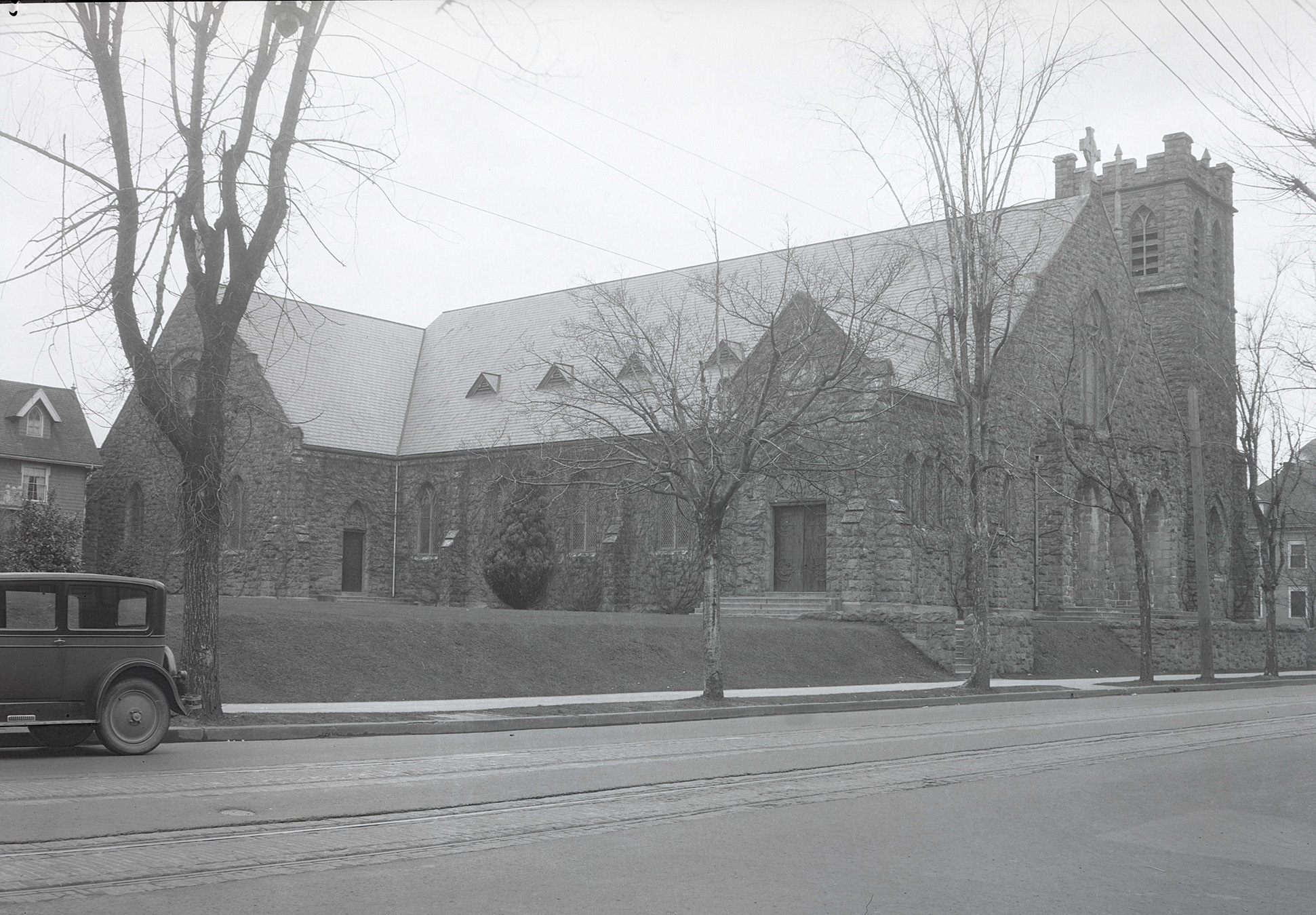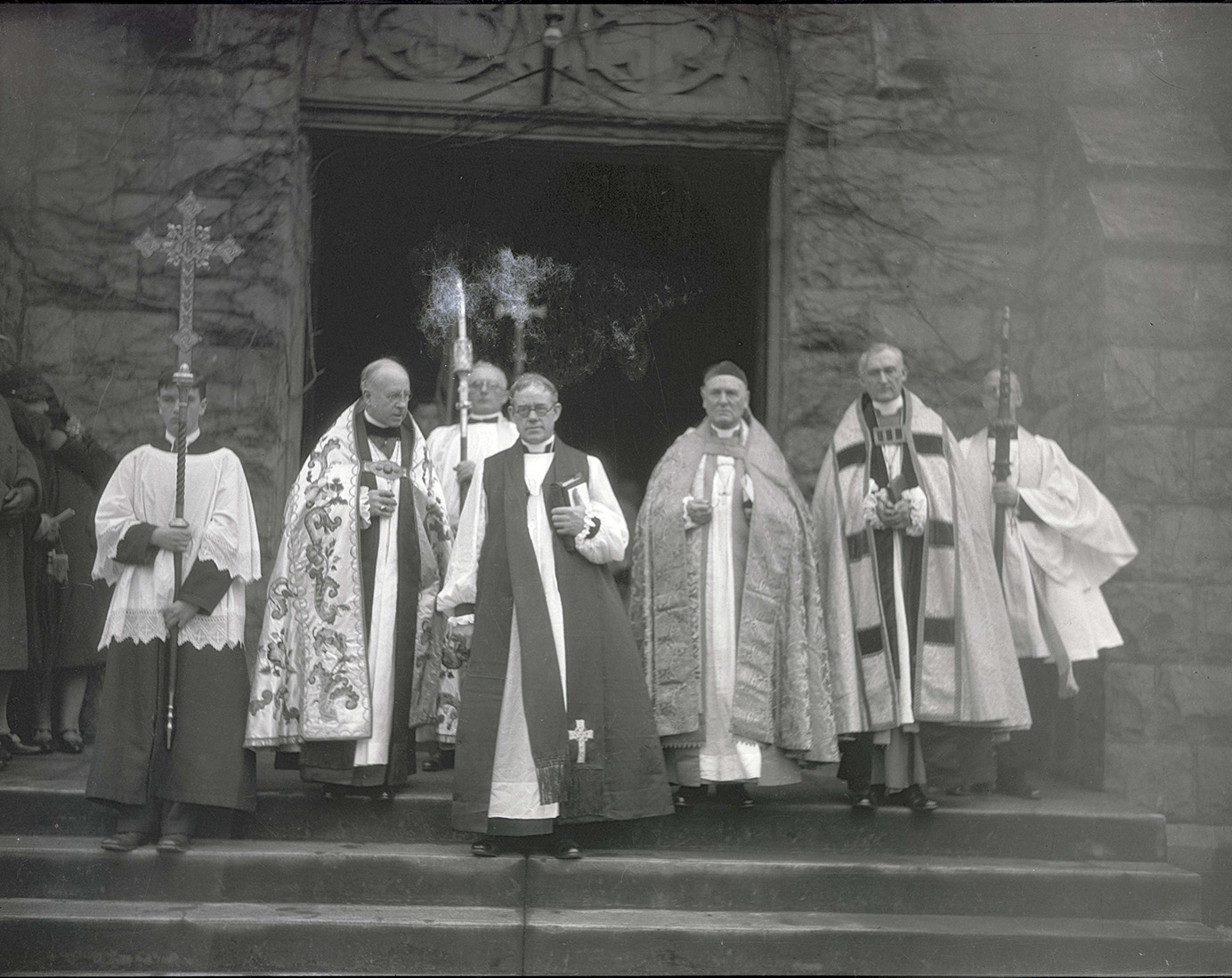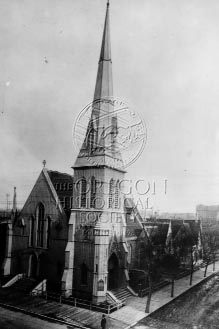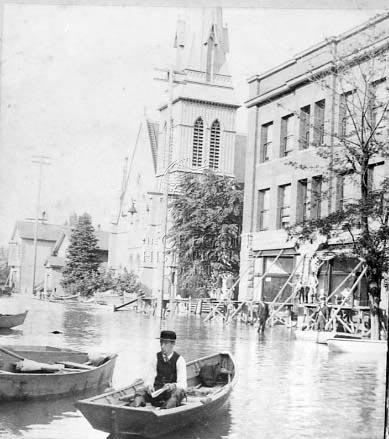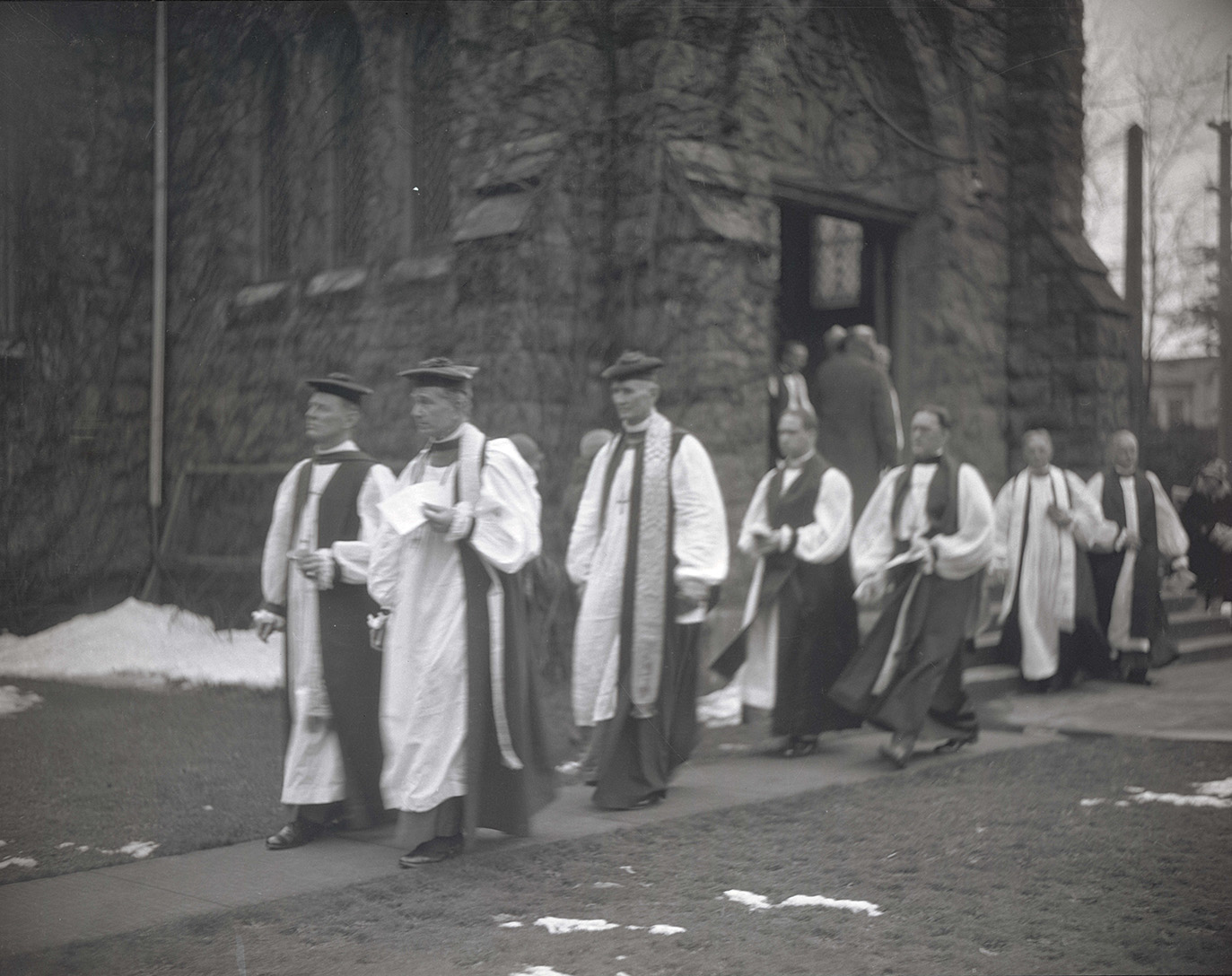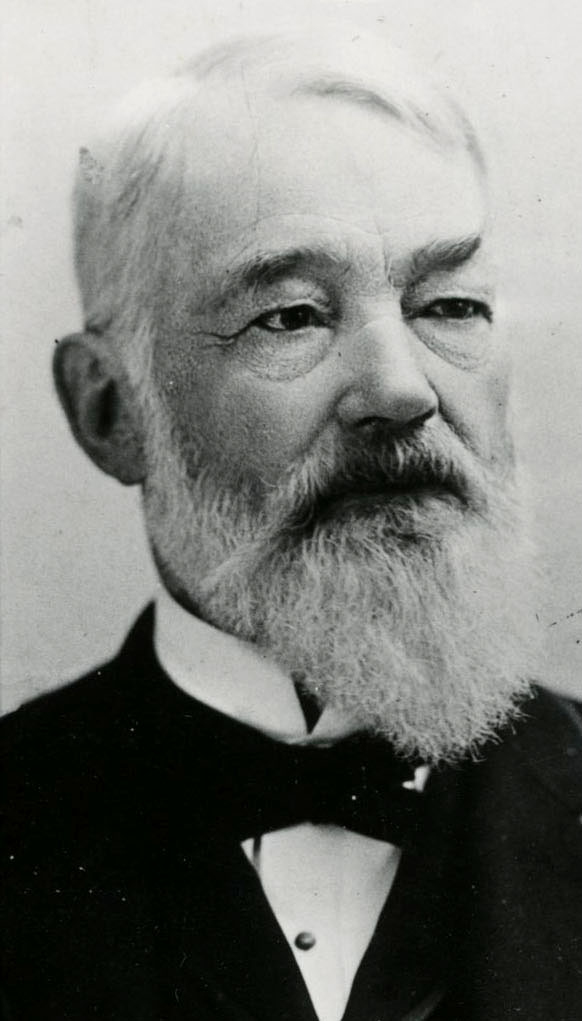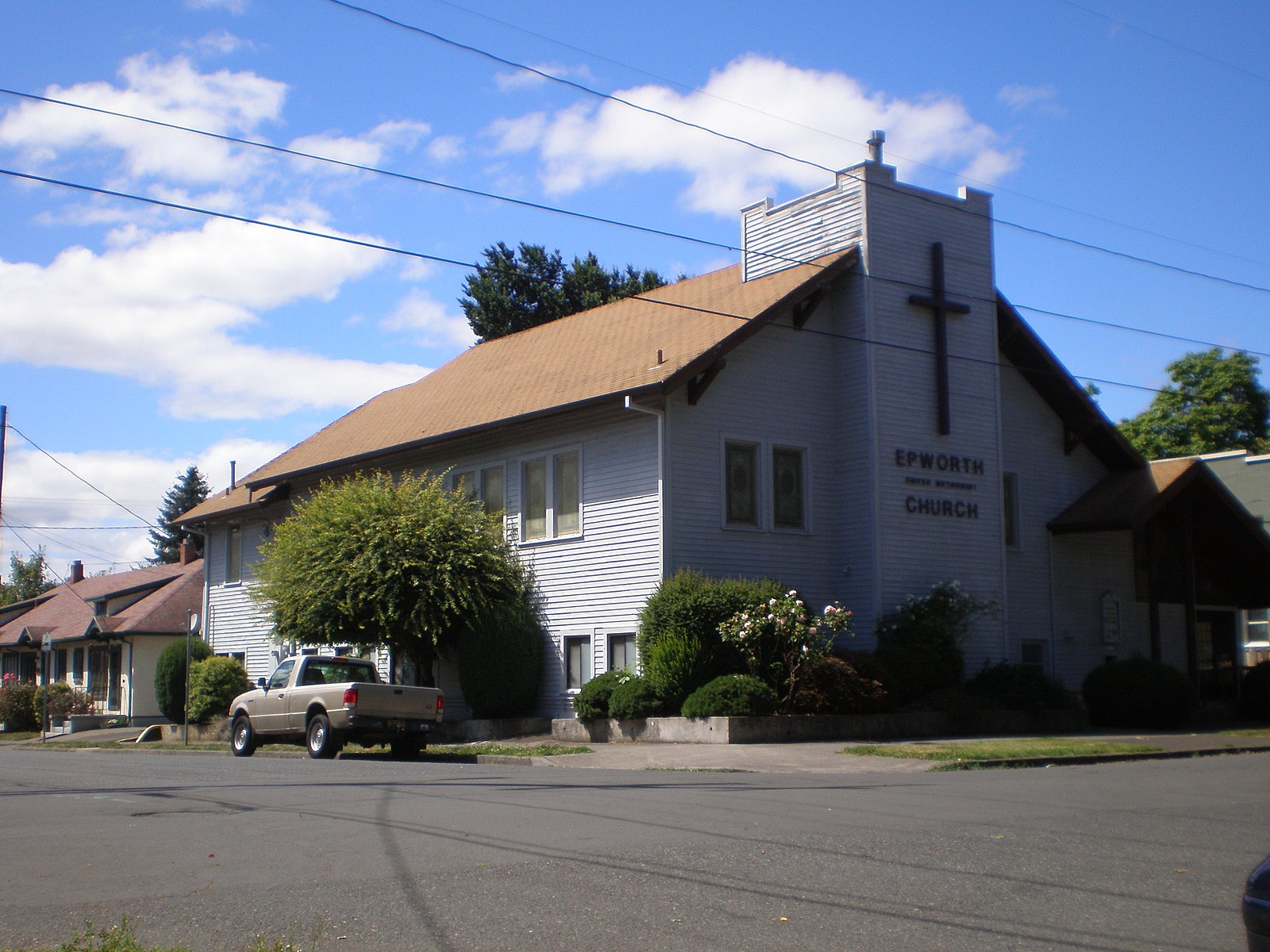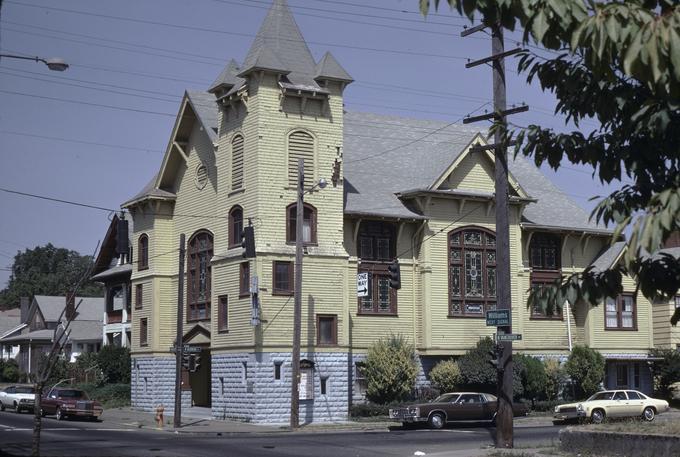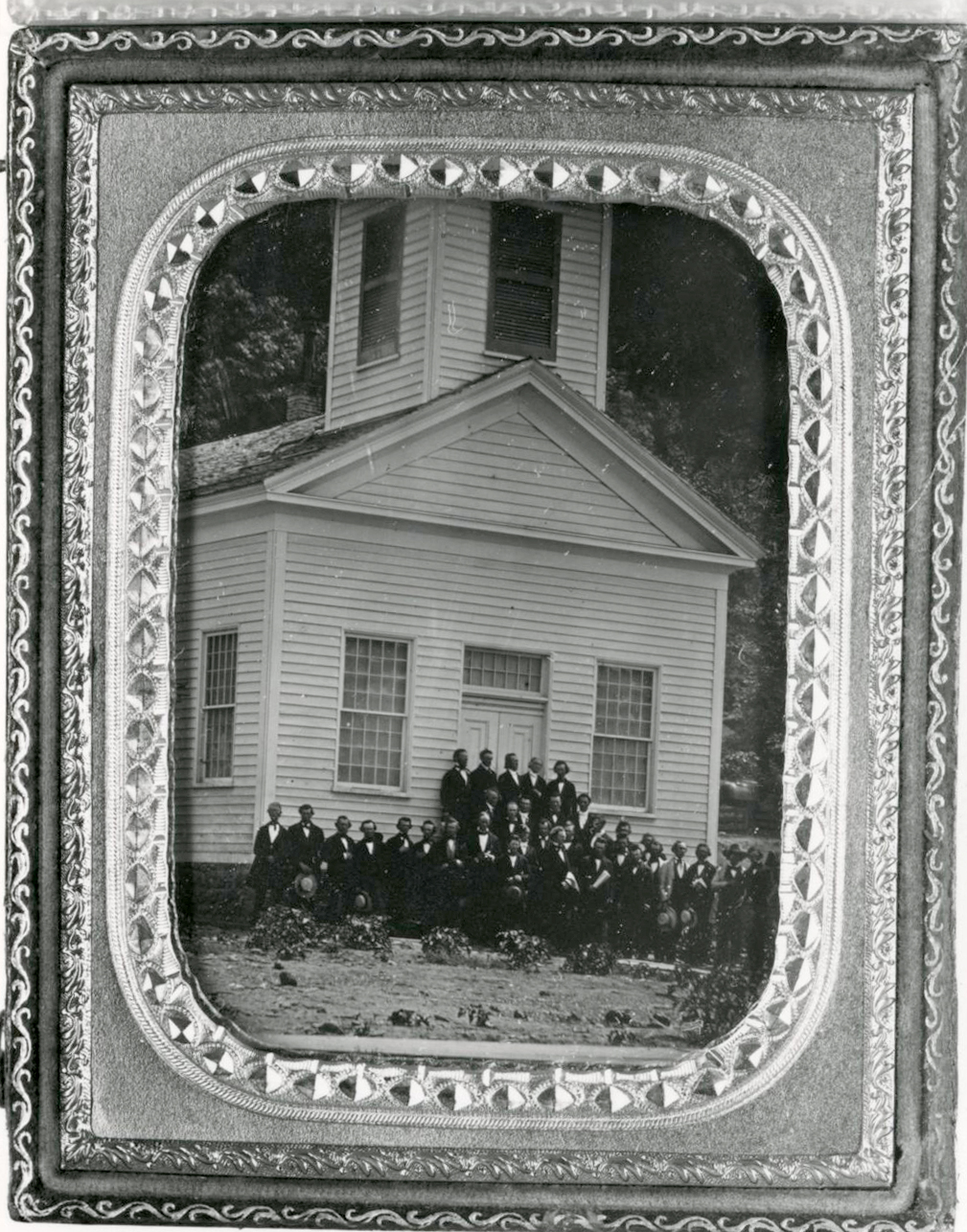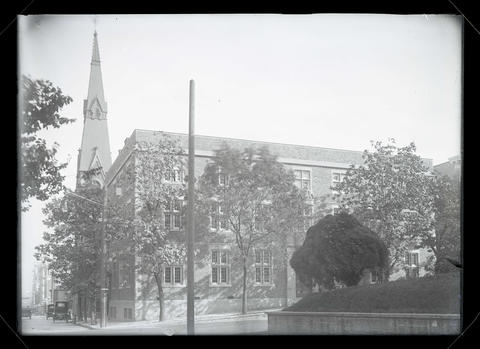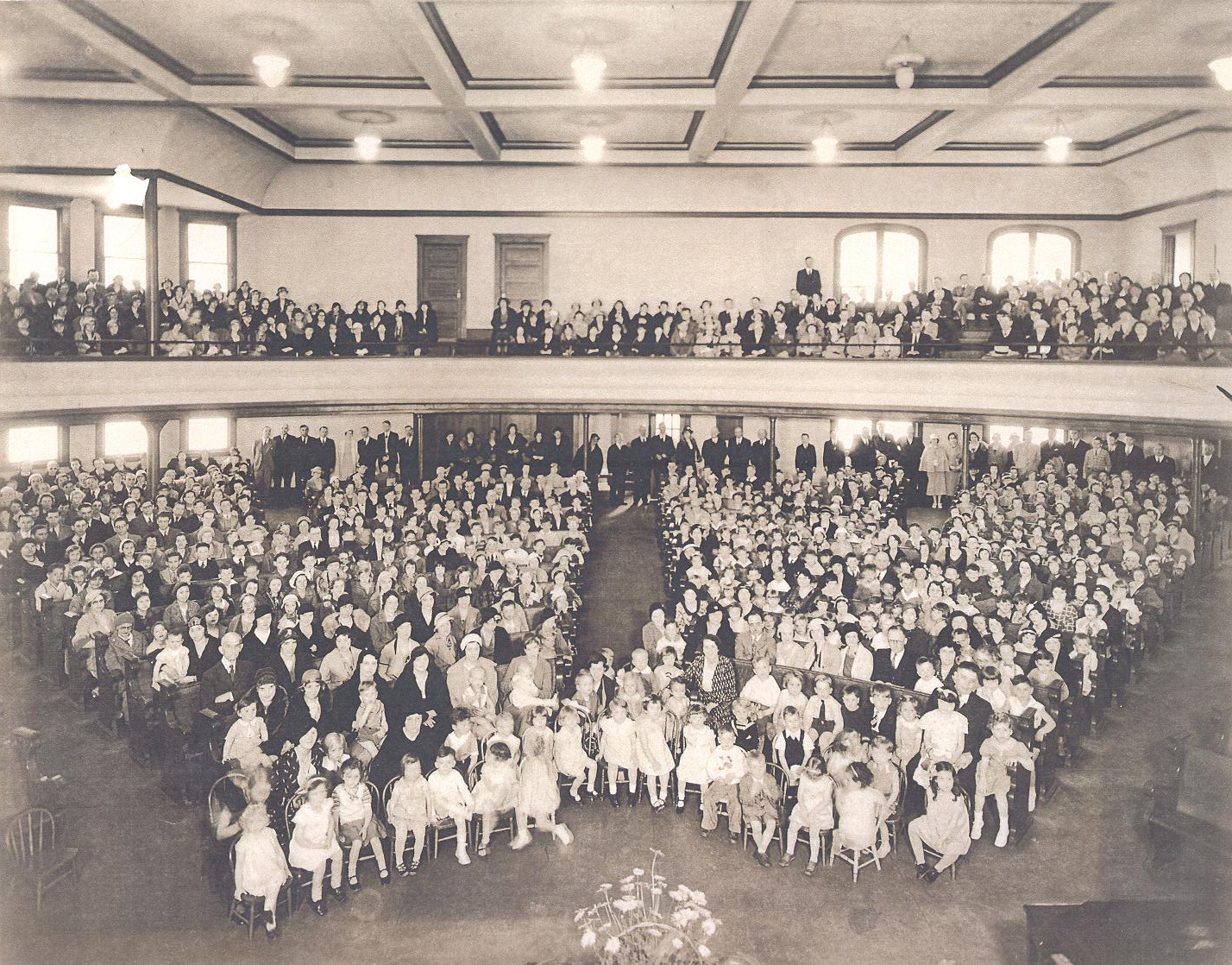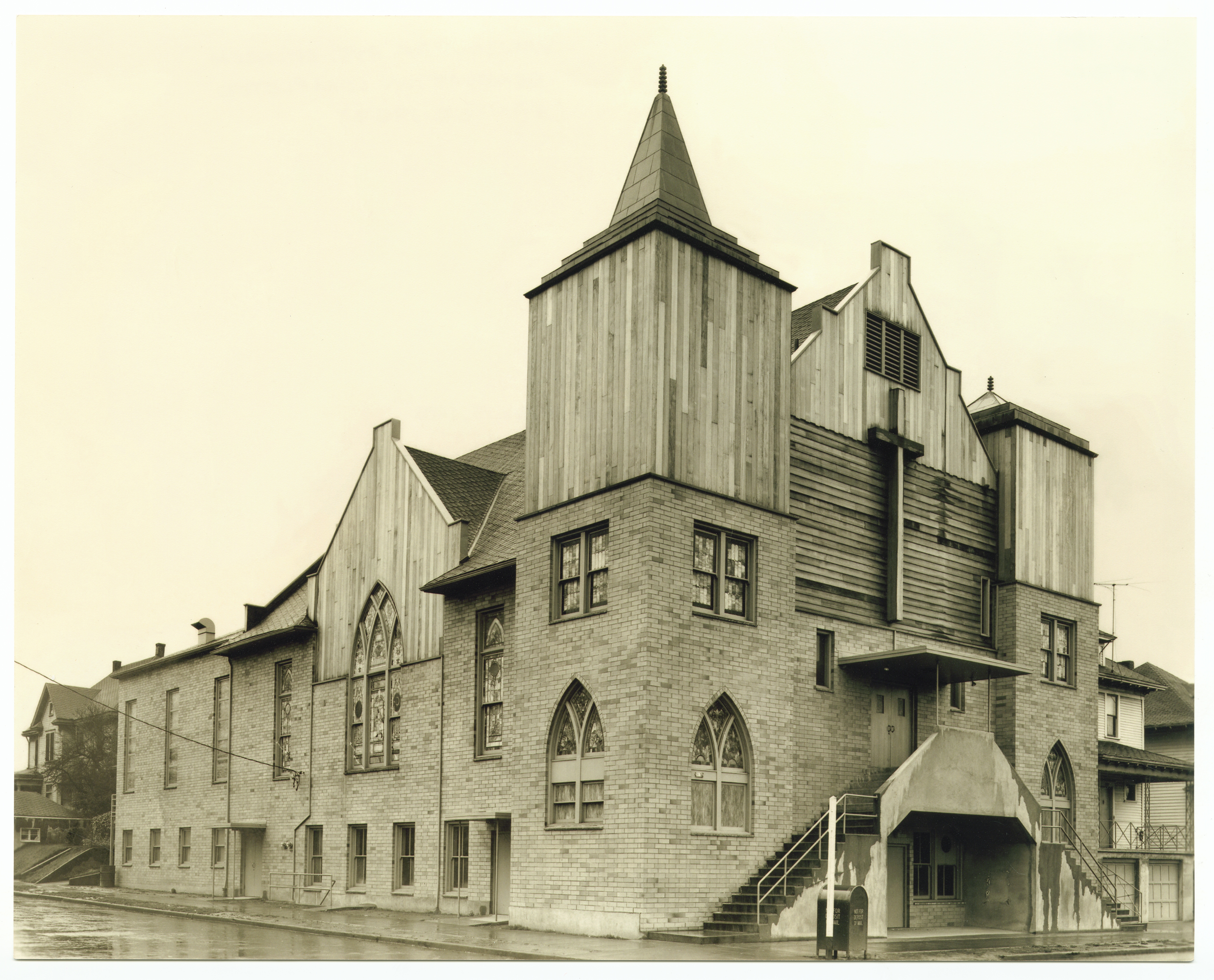The history of Trinity Episcopal Church, now the cathedral of the Diocese of Oregon, has been an integral part of the history of Portland and the State of Oregon. The cathedral was the first Episcopal church established in the Oregon Territory and, with 1,500 members, is the largest Episcopal congregation in the state.
Two priests, the Reverend St. Michael Fackler, who arrived in 1849 by way of the Oregon Trail, and the Reverend William Richmond, who had been dispatched by the Church Missionary Society by way of Cape Horn in 1851, met with those interested in establishing an Episcopal parish in May of that year. Captain Benjamin Stark donated land at Southwest Second and Oak streets in Portland for its first building, and the first Episcopal missionary bishop, Thomas Fielding Scott, consecrated a small wooden structure in September 1854.
The church boasted many members who were prominent in Portland civic life and were involved in trying to improve conditions in Portland. In 1869, for example, Bishop Benjamin W. Morris and the Trinity vestry established St. Helen's Hall, a school for girls, on land supplied by the estates of Captain George H. Flanders and Captain John H. Couch.
As the congregation grew, members constructed a larger, more permanent church in 1873 at Southwest Sixth and Oak. Judge Matthew Deady, an active vestry member, persuaded Benjamin Stark to donate a great bell that had been cast from the metal of an old Spanish cannon. With Bishop Morris, the leaders of the congregation helped establish Good Samaritan Hospital in 1874 and St. Mark's on the corner of Twenty-first and Lovejoy. In 1889, according to a marker on the outside of Kempton Hall where the Bishop Scott Academy Armory once stood, the Trinity women helped sponsor the First Portland Rose Show, the forerunner of the Portland Rose Festival.
Throughout its history, Trinity Episcopal Church has had a series of rectors whose long tenures have shaped its growth and character. In 1902, shortly after the Reverend A.A. Morrison (rector from 1899 to 1939) arrived, the church building was severely damaged by fire. Again, the church moved closer to its congregants, many of whom by then were living in Northwest Portland.
The current church building on Nineteenth and Everett, designed in 1904 by David C. Lewis, a third-generation member, was dedicated in 1906. The building included the Bishop Scott window and the pulpit salvaged from the building that had burned. Active in the larger community, Morrison fostered church growth and from the pulpit often battled the impression that Trinity was a wealthy, indifferent congregation. The Trinity Women’s Guild was particularly active at Good Samaritan Hospital.
The Reverend Lansing Kempton arrived as rector in 1937 in the midst of the Depression. Known for both his preaching and teaching until his retirement in 1968, Kempton presided over the expansion of the church campus—breaking ground for the current parish hall in 1938, enlarging the chapel in 1952, and in 1956 adding an office and Sunday School wing where the rectory once stood. He also encouraged the congregation to add Connick stained-glass windows, which depict the Beatitudes, in the late 1940s and a Rose Window in 1949.
Under the leadership of the Reverend William Wagner during the 1980s, the church redesigned its worship space to reflect liturgical changes that were the result of the 1978 Book of Common Prayer. In 1973, the church hired organist and choirmaster John R. Strege, who developed a successful music program. Robert Ladehoff, bishop of the Episcopal Diocese of Oregon, said that when he arrived in Portland in 1985, “music was what kept Trinity afloat.” When Strege retired in 2010, Oregonian music critic David Stabler wrote that “he leaves a legacy that not only transformed music at the cathedral and expanded into Portland’s music community but also drew world-class organists to town” to play the million-dollar Rosales pipe organ that Strege was responsible for bringing to Trinity.
After Trinity Episcopal Church became the Cathedral of the Diocese under the aegis of Bishop Ladehoff in 1993, the Very Reverend Anthony Thurston and the Very Reverend William Lupfer (who arrived in 2003) continued Trinity’s tradition of leadership. In the early twenty-first century, the cathedral is active in the larger community and is known for its Center for Spiritual Development.
-
![]()
Trinity Episcopal Cathedral, NW 19th and Everett, c.1930.
Oregon Historical Society Research Library, 371N5748
-
![]()
Trinity Episcopal Cathedral, c.1930.
Oregon Historical Society Research Library, 371N4275
-
![The building burned in 1902.]()
Trinity Episcopal, SW 6th and Oak, Portland.
The building burned in 1902. Oregon Historical Society Research Library, 001991
-
![View from SW 7th Ave.]()
Trinity Episcopal, SW 6th and Oak, Portland, during the 1894 flood.
View from SW 7th Ave. Oregon Historical Society Research Library, 016140
-
![]()
Clergy at Trinity Episcopal Cathedral, c.1930.
Oregon Historical Society Research Library, 371N4270
Related Entries
-
![Benjamin Stark (1820-1898)]()
Benjamin Stark (1820-1898)
Benjamin Stark was a merchant, land speculator, and politician active i…
-
![Epworth United Methodist Church (Portland)]()
Epworth United Methodist Church (Portland)
From its beginnings as a mission in the late 1890s, Epworth United Meth…
-
![First African Methodist Episcopal Zion Church]()
First African Methodist Episcopal Zion Church
First African Methodist Episcopal Zion is Portland's oldest African Ame…
-
![First Methodist Church (Portland)]()
First Methodist Church (Portland)
Methodist Episcopal Church, Portland's first church, began with seven m…
-
![First Presbyterian Church (Portland)]()
First Presbyterian Church (Portland)
First Presbyterian Church of Portland, organized in January 1854 just t…
-
![First Unitarian Church (Portland)]()
First Unitarian Church (Portland)
In 1866, the Ladies Sewing Circle, a small group of Portland women from…
-
![Hinson Memorial Baptist Church]()
Hinson Memorial Baptist Church
The year was 1857, two years before Oregon statehood, when a group of c…
-
![Matthew Deady (1824-1893)]()
Matthew Deady (1824-1893)
Matthew Paul Deady was a lawyer, politician, and judge in the Oregon Te…
-
![Vancouver Avenue First Baptist Church]()
Vancouver Avenue First Baptist Church
The history of the Vancouver Avenue First Baptist Church of Portland is…
Map This on the Oregon History WayFinder
The Oregon History Wayfinder is an interactive map that identifies significant places, people, and events in Oregon history.
Further Reading
Beatty, John C. “The Trials of A. A. Morrison, Rector of Trinity Church.” Oregon Historical Quarterly 97:4 (Winter 1996-97), 428-469.
Clark, Malcom Jr., ed. Pharisse Among Philistines: The Diary of Judge Matthew P. Deady 1871-1892. Portland, Ore., 1975.
Trinity Episcopal Cathedral. http://www.trinity-episcopal.org/.

